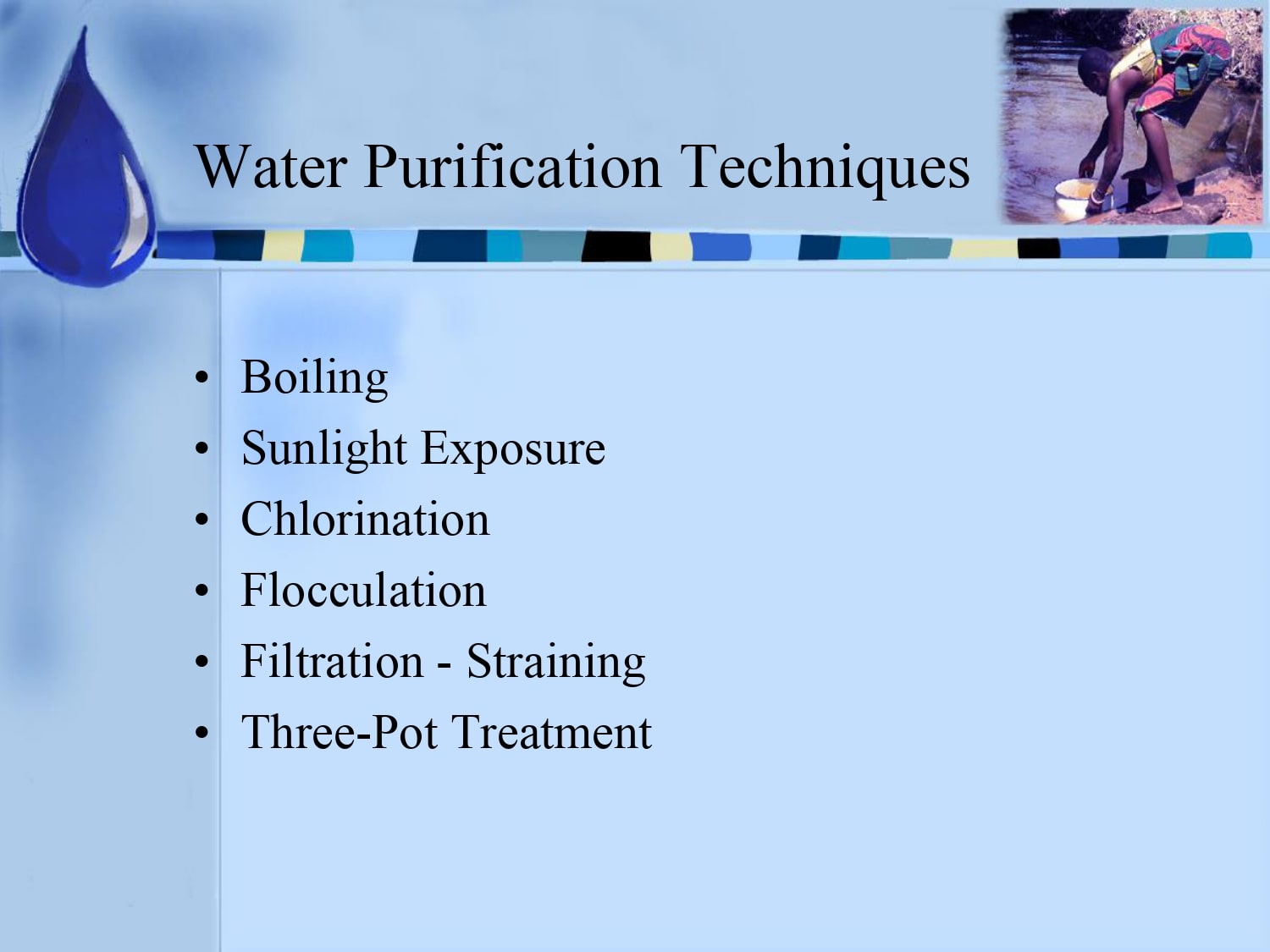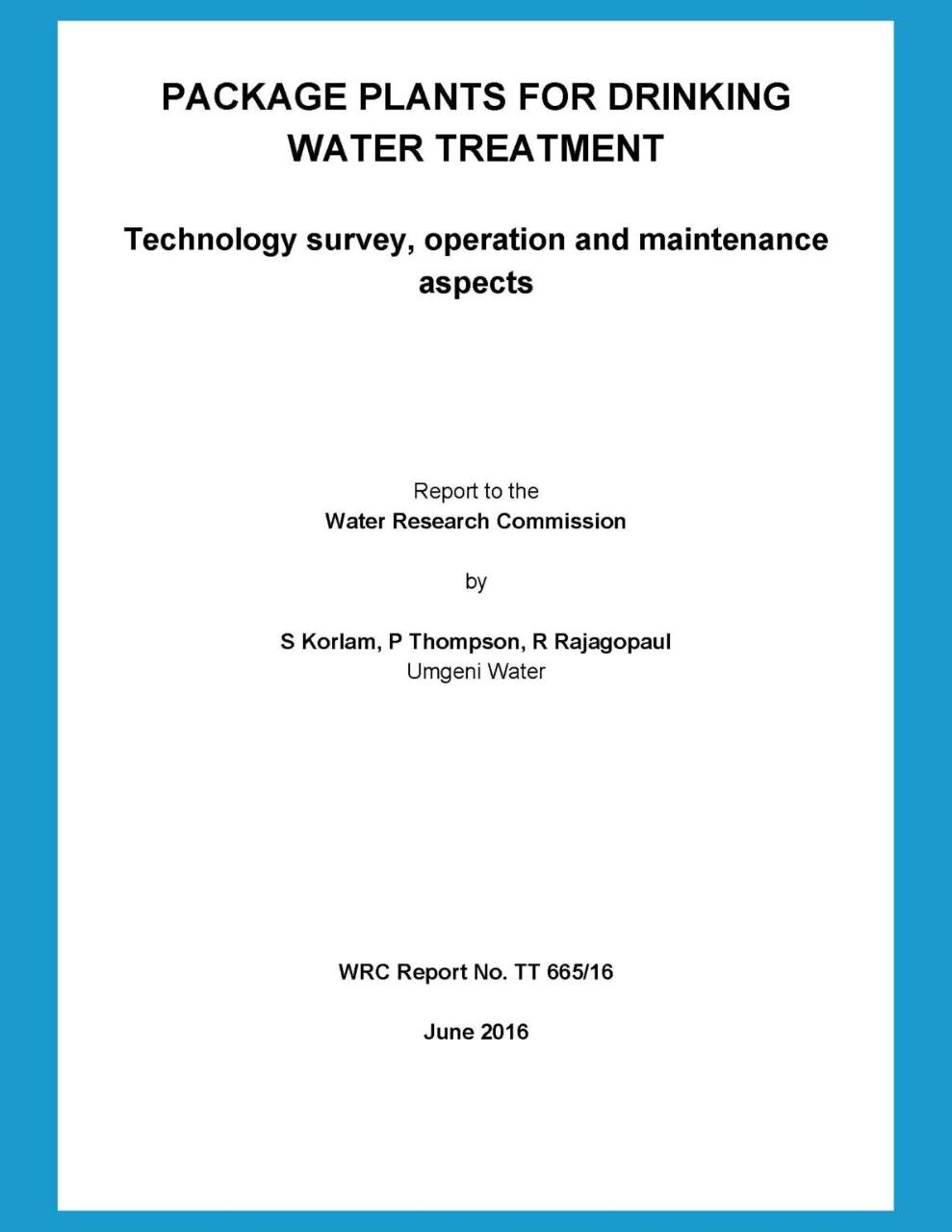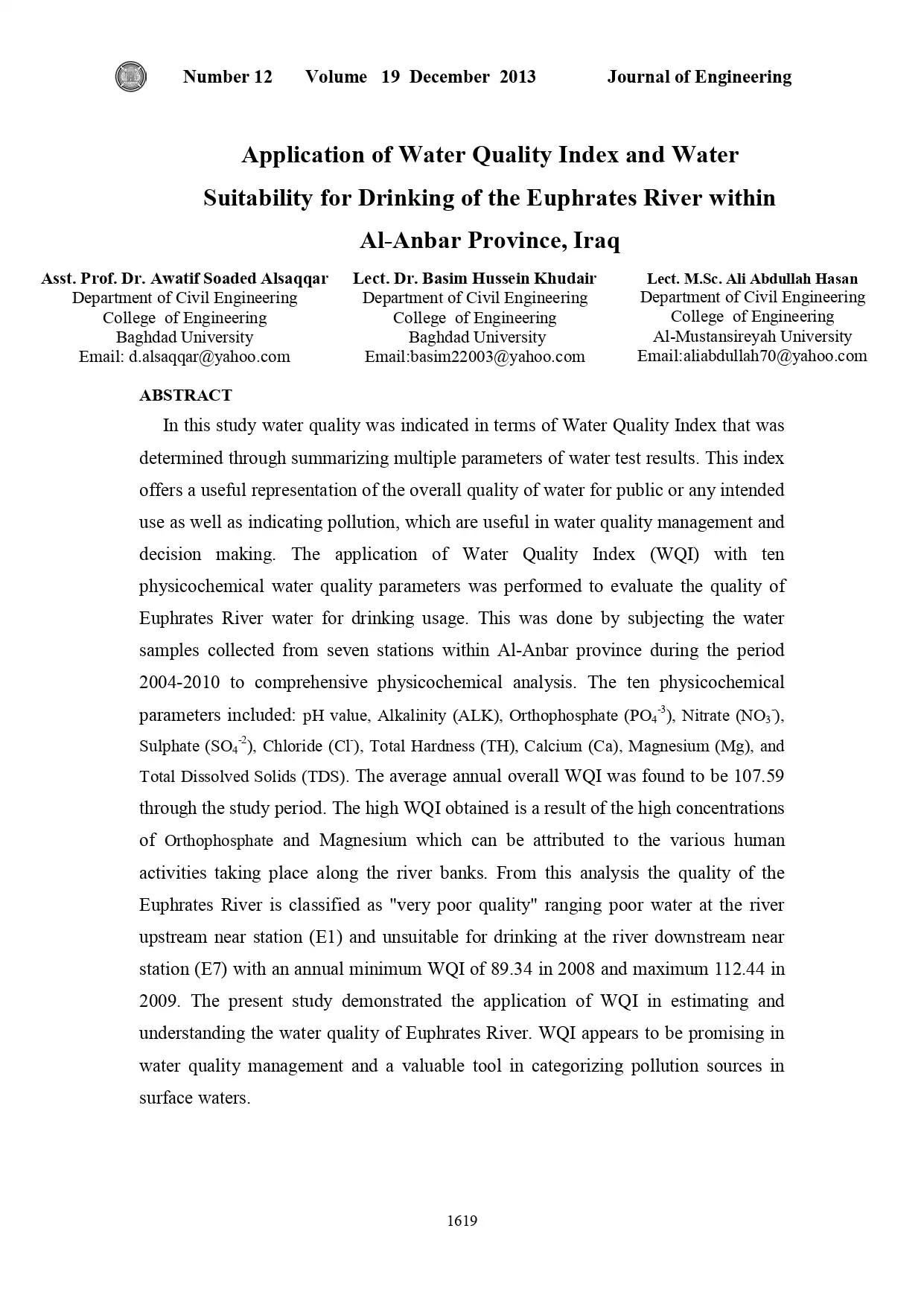Water Purification Techniques
Usually dispatched in 2 to 3 days
Usually dispatched in 2 to 3 days
Category:
Drinking Water Treatment
Only logged in customers who have purchased this product may leave a review.
Related products
Big Data Analysis For Studying Water Supply And Sanitation Coverage In Cities (Russia)
Big data analysis for water supply and sanitation is important for ensuring urban viability. Our research is devoted to studying the methodology for analyzing big data of the water supply and sanitation systems. Based on a review of scientific publications and their analysis, a model for analyzing large data was proposed. It comprises information sources, data collection and storage platforms with indication of parameters for the programming model, runtime and
storage environment, as well as data analysis and processing.
Big Data Analysis For Studying Water Supply And Sanitation Coverage In Cities (Russia)
Big data analysis for water supply and sanitation is important for ensuring urban viability. Our research is devoted to studying the methodology for analyzing big data of the water supply and sanitation systems. Based on a review of scientific publications and their analysis, a model for analyzing large data was proposed. It comprises information sources, data collection and storage platforms with indication of parameters for the programming model, runtime and
storage environment, as well as data analysis and processing.
Introduction to Water Treatment
This is an introduction to water treatment systems and technology. It is not a design manual or an exhaustive treatise. It is intended for engineers who are not regularly involved in water treatment projects, but who are interested in learning some of the basics involved. Criteria to be followed in determining the necessity for and the extent of treatment are discussed here, as are procedures applicable to the planning of water treatment projects.
Introduction to Water Treatment
This is an introduction to water treatment systems and technology. It is not a design manual or an exhaustive treatise. It is intended for engineers who are not regularly involved in water treatment projects, but who are interested in learning some of the basics involved. Criteria to be followed in determining the necessity for and the extent of treatment are discussed here, as are procedures applicable to the planning of water treatment projects.
Package Plants For Drinking Water Treatment
In efforts to make package plants more compact, affordable and easier to operate and maintain, it has been noted that the design and performance of some of these plants containing conventional treatment processes is sometimes compromised if technical expertise in this regard is lacking. Generally, there are several risks associated with poorly designed treatment systems, including loss of production, poor safety and compromised equipment and process unit efficiency with associated higher operating and maintenance costs. These risks have more severe consequences in the case of desalination (including water reclamation and water re-use) package plants. The objective of this project is to develop a set of guidelines to assist municipalities, water treatment practitioners, designers and package plant manufacturers in the specification and design of appropriate unit processes and operating parameters to fit the influent water quality, operating environment and other special treatment requirements.
Package Plants For Drinking Water Treatment
In efforts to make package plants more compact, affordable and easier to operate and maintain, it has been noted that the design and performance of some of these plants containing conventional treatment processes is sometimes compromised if technical expertise in this regard is lacking. Generally, there are several risks associated with poorly designed treatment systems, including loss of production, poor safety and compromised equipment and process unit efficiency with associated higher operating and maintenance costs. These risks have more severe consequences in the case of desalination (including water reclamation and water re-use) package plants. The objective of this project is to develop a set of guidelines to assist municipalities, water treatment practitioners, designers and package plant manufacturers in the specification and design of appropriate unit processes and operating parameters to fit the influent water quality, operating environment and other special treatment requirements.
Aerogel & Iron-Oxide Impregnated Granular Activated Carbon Media For Arsenic Removal
The goal of this project is to validate proof-of-concept testing for iron enriched granular activated carbon (GAC) composites (aerogel-GAC or iron-oxide impregnated) as a viable adsorbent for removing arsenic from groundwater and conduct technical and economic feasibility assessments for these innovative processes. Specific project objectives include: • Conduct batch experiments for aerogel-GAC and Fe-oxide impregnated GAC composites to evaluate their performance removing arsenic.
• Evaluate Fe-GAC media performance in rapid small scale column tests (RSSCTs) to assess arsenic removal in a more dynamic treatment system.
• Evaluate Fe-GAC potential for removal of other contaminants (e.g., methyl tertiary butyl ether, dissolved organic carbon).
• Characterize Fe-GAC media.
• Correlate performance and media characterization for possible selection of two media for a future second phase of this project.
Aerogel & Iron-Oxide Impregnated Granular Activated Carbon Media For Arsenic Removal
The goal of this project is to validate proof-of-concept testing for iron enriched granular activated carbon (GAC) composites (aerogel-GAC or iron-oxide impregnated) as a viable adsorbent for removing arsenic from groundwater and conduct technical and economic feasibility assessments for these innovative processes. Specific project objectives include: • Conduct batch experiments for aerogel-GAC and Fe-oxide impregnated GAC composites to evaluate their performance removing arsenic.
• Evaluate Fe-GAC media performance in rapid small scale column tests (RSSCTs) to assess arsenic removal in a more dynamic treatment system.
• Evaluate Fe-GAC potential for removal of other contaminants (e.g., methyl tertiary butyl ether, dissolved organic carbon).
• Characterize Fe-GAC media.
• Correlate performance and media characterization for possible selection of two media for a future second phase of this project.
Appropriate Technologies For Drinking Water Treatment In Mediterranean Countries
This paper aims at analyzing the drinking water issue in the Mediterranean region, highlighting the principal problems and the appropriate technologies applicable in the different countries. The countries of this area are characterized by a huge variety from social, cultural, economic and environmental point of view. In particular, water distribution is inhomogeneous between the North, East, and South; even the type of water sources and the related quantity and quality problems differ country by country. Potable water comes from brackish and seawater, surface water, groundwater and water reservoirs with each source face different issues. The main problem of brackish and seawater for example is the high salinity and the contamination by disinfection byproducts, in addition to the microbiological and chemical contamination due to human activities that characterize also other surface water sources. Groundwater is also affected by human activity and it is not exempted from salinity because of the water intrusion. Moreover, water reservoirs are often contaminated by seasonal algal blooms. Technologies applied for drinking water treatment vary country by country. The paper presents the main treatment processes
associated with the main water pollutants, according to the Mediterranean region. Case studies of drinking water treatment plants are also analyzed, presenting alternative technologies appropriate for specific contexts, among others. The characteristics of each specific context should be carefully analyzed in order to develop the most appropriate technologies; high-end technologies for drinking water treatment may not be applied equally to all countries or communities of the Mediterranean region.
Appropriate Technologies For Drinking Water Treatment In Mediterranean Countries
This paper aims at analyzing the drinking water issue in the Mediterranean region, highlighting the principal problems and the appropriate technologies applicable in the different countries. The countries of this area are characterized by a huge variety from social, cultural, economic and environmental point of view. In particular, water distribution is inhomogeneous between the North, East, and South; even the type of water sources and the related quantity and quality problems differ country by country. Potable water comes from brackish and seawater, surface water, groundwater and water reservoirs with each source face different issues. The main problem of brackish and seawater for example is the high salinity and the contamination by disinfection byproducts, in addition to the microbiological and chemical contamination due to human activities that characterize also other surface water sources. Groundwater is also affected by human activity and it is not exempted from salinity because of the water intrusion. Moreover, water reservoirs are often contaminated by seasonal algal blooms. Technologies applied for drinking water treatment vary country by country. The paper presents the main treatment processes
associated with the main water pollutants, according to the Mediterranean region. Case studies of drinking water treatment plants are also analyzed, presenting alternative technologies appropriate for specific contexts, among others. The characteristics of each specific context should be carefully analyzed in order to develop the most appropriate technologies; high-end technologies for drinking water treatment may not be applied equally to all countries or communities of the Mediterranean region.
Adsorbent Material Used In Water Treatment-A Review
Adsorption method of purify water relies mainly on the adsorbent to adsorb the impurities in the water, this paper introduces the latest research progress both at home and abroad, such as activated carbon, chitosan, zeolites, clay minerals plant-based, industrial waste . These adsorbent type will play a more and more important role in water treatment in the future.
Adsorbent Material Used In Water Treatment-A Review
Adsorption method of purify water relies mainly on the adsorbent to adsorb the impurities in the water, this paper introduces the latest research progress both at home and abroad, such as activated carbon, chitosan, zeolites, clay minerals plant-based, industrial waste . These adsorbent type will play a more and more important role in water treatment in the future.
Biological Processes Nitrogen & Phosphorus
. Knowledge about the processes of the removal of nitrogen and phosphorus from wastewater by biological processes
. Knowledge about systems with enhanced biological treatment processes
Biological Processes Nitrogen & Phosphorus
. Knowledge about the processes of the removal of nitrogen and phosphorus from wastewater by biological processes
. Knowledge about systems with enhanced biological treatment processes
Application of Water Quality Index and Water Suitability for Drinking of the Euphrates River within Al-Anbar Province, Iraq
In this study water quality was indicated in terms of Water Quality Index that was determined through summarizing multiple parameters of water test results. This index offers a useful representation of the overall quality of water for public or any intended use as well as indicating pollution, which are useful in water quality management and decision making. The application of Water Quality Index (WQI) with ten physicochemical water quality parameters was performed to evaluate the quality of Euphrates River water for drinking usage. This was done by subjecting the water samples collected from seven stations within Al-Anbar province during the period 2004-2010 to comprehensive physicochemical analysis.
Application of Water Quality Index and Water Suitability for Drinking of the Euphrates River within Al-Anbar Province, Iraq
In this study water quality was indicated in terms of Water Quality Index that was determined through summarizing multiple parameters of water test results. This index offers a useful representation of the overall quality of water for public or any intended use as well as indicating pollution, which are useful in water quality management and decision making. The application of Water Quality Index (WQI) with ten physicochemical water quality parameters was performed to evaluate the quality of Euphrates River water for drinking usage. This was done by subjecting the water samples collected from seven stations within Al-Anbar province during the period 2004-2010 to comprehensive physicochemical analysis.
Removal of Aluminium from Drinking Water
Aluminium in drinking water comes from natural sources and the alum used as coagulant in the water treatment process. Exposure to aluminium has been implicated in dialysis dementia, Parkinson and Alzheimer’s disease. Drinking water containing aluminium was considered to be one of the main sources of Al intake into human body. For this reason, the removal of aluminium from drinking water is vital to our health. In this study, removal of aluminium was carried out by using a chelating resin.
Removal of Aluminium from Drinking Water
Aluminium in drinking water comes from natural sources and the alum used as coagulant in the water treatment process. Exposure to aluminium has been implicated in dialysis dementia, Parkinson and Alzheimer’s disease. Drinking water containing aluminium was considered to be one of the main sources of Al intake into human body. For this reason, the removal of aluminium from drinking water is vital to our health. In this study, removal of aluminium was carried out by using a chelating resin.














Reviews
There are no reviews yet.